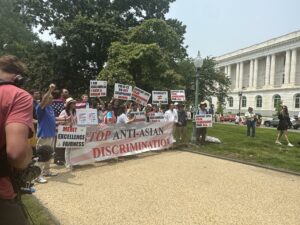Quillette: The Peculiar Silence in the Students for Fair Admissions Decision

To hear almost anyone tell it, racial preferences in university admissions are dead. But this pervasive sense of finality belies a curious silence in the Supreme Court’s decision in Students for Fair Admissions. The Court never expressly overrules the line of precedent that has allowed universities to discriminate for the last 50 years. Without a direct overruling, how can we know whether the Supreme Court has ended racial preferences or simply renovated the existing case law?
A careful reading of the Chief Justice’s opinion and an understanding of his judicial philosophy indicates that the Court has left universities with no realistic means to rely on racial preferences in admissions, even if the case law stating otherwise lingers in a vegetative state. Four key cases have formed the foundation for racial preferences in student admissions, with a case called Grutter v. Bollinger as the cornerstone. The Students for Fair Admissions case presented the Court with a choice: either apply the existing test under Grutter and friends or uproot the whole line of precedent.
And here’s the odd silence sitting at the very heart of Students for Fair Admissions: It is no easy task to tell which approach the Chief Justice took in his majority opinion. His silence on whether Grutter remains good law is even more striking given that the petitioner in the case and 23 amici supporting the petitioner openly called for the Court to overrule Grutter. Everyone expected the Court to say something about it.
To continue reading this op-ed, please visit Quillette.









